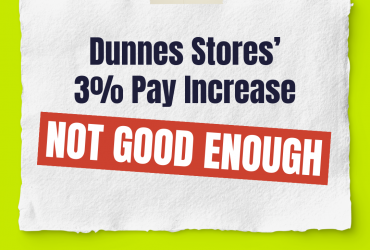Beyond your reach
Friday 19 January 2018THE national median disposable, net or after tax wage has increased by just under 8% since 2012 (now at €2,087 p.m. approx.) whilst the take home pay of a full-time minimum wage worker has increased by about 10% (now at €1,490).
The most recent reports by daft.ie show an almost 60% rise in average rents across the country and 40% growth in asking prices for residential properties in the same period. The biggest increases have been in the Dublin area where housing costs were already significantly ahead of the rest, followed by Cork and Galway.
The growth in housing costs relative to wages has obvious implications for the standards of living of employees, especially those in rental accommodation. In addition to the regional component, growth in housing costs have important distributional implications as some sections of society benefit at the expense of others.
Current trends disproportionately affect young people and those in the lower end of the income distribution (those more likely to be renting), as a higher proportion of their disposable income is eaten up by price increases. Higher rents also further diminish the chances of saving for the minimum required deposit to buy a property.
This has resulted in a 91% rise in the amount of young people recorded as homeless since 2012, twice as many adult children living at home as in 2006 (460,000 in 2016) and the average age of a first-time buyer rising from 29 to 34 in the same short period.
Since 2012, though unemployment has come down markedly – in 2015 the deprivation rate (a consumption-based poverty indicator) was still more than three times the rate for workers as it was in 2007 (16.4% compared to 4.9%). Unfortunately, the excessive rental costs also inhibit the ability of young and low-paid Irish workers to save up for a ticket to Vancouver or Perth!
These developments benefit a relatively small section of society, namely current property owners and banks.
Property owners are happy to see their negative equity position improve, landlords are happy to see rents increase whilst banks are happy to see their balance sheets improve.
The rise in these costs also has implications for every other sector in society in that it lowers demand for goods and services elsewhere as people prioritise the fundamental need to put a roof over their head. This hits sales in the local shop, pub or restaurant, business for taxi drivers and car dealers as well as demand for extracurricular activities for children such as sport clubs or music schools.
By extension, this affects the decisions of these businesses to hire new workers, to give wage increases or to invest more generally. Similarly, this redistribution of resources affects Ireland’s ability to attract multinationals, the lynchpin of our development policy for the best part of four decades. Higher rents mean higher wages to pay to highly skilled and highly mobile workers. Recruiters are pointing to growing difficulty in attracting foreign talent for key industries due to the current problems in the housing market and the additional wages that would have to be paid to make up for these excessive rents.
Illustrative of these costs and their relationship to wages are a selection of graphs from an upcoming and more comprehensive working paper on housing affordability for the Nevin Economic Research Institute.
Graph 1 (see page 28 of Shopfloor Dec 17) shows that a full-time minimum wage worker spends 35%-48% of their take home pay on a double-room in shared accommodation anywhere in Dublin. Prices have gone up by 50% over five years across the county.
The cost of renting a one-bed apartment in Dublin 2 (€1,668) is more than 70% of the monthly median net take home pay of an Irish worker (€2, 087). The proportion going to rent in Dublin 1, 7 and 8 and South Co Dublin is broadly similar.
In practical terms, 50% of Irish employees would have €170 or less left a week after rent to pay for food, transport, utilities, clothing, health and a pension should they rent a one-bed apartment in any of these areas. In Cork, though rental prices are not as high, a full-time minimum-wage worker would still have to spend 56% of his/her after tax wages on renting a one-bed, leaving just over €150 a week for the rest.
As a rule of thumb, economists and financial experts recommend that housing should not take up more than 30% of an individual’s or household’s net income. Judging by this metric, Graph 2 (page 28 – Shopfloor Dec. 17) shows that renting a two-bedroom apartment in most areas in Dublin is unaffordable for two workers earning the median wage, with prices particularly prohibitive for younger workers.
Indeed, it is clear that this really is a Dublin problem, though the other cities are by no means cheap. Taking a three-bed as the minimum acceptable size, there is nowhere in the Dublin area where two full-time minimum-wage workers could hope to raise a family without significant state intervention.
Maximum allowable
In Dublin 8 the average two-bed apt/house would cost over 50% of the net wage of two minimum wage workers and €185 more than in 2016, a full 20 hours’ worth of wages. It follows that a four-bedroom house is even further beyond the reach of most wage earners and thus not gone into in great depth here.
Central Bank rules state that the maximum allowable mortgage loan is 3.5 times the annual gross income (before tax) of the applicant. The aforementioned paper calculates the relationship between current median after tax wages and current average asking prices in Dublin as an indicator (but by no means a golden rule) of affordability.
The ratios show that the median earner in the 25-34 year age bracket would be unable to secure a mortgage on their current wages for a one-bedroom apartment anywhere in Dublin with the average cost of a two-bed over six times the annual net wage of two median earners in Dublin 1,2,3,4,5,6,6W,14,18 and South Co. Dublin.
It is no surprise with these figures that the Central Bank found in 2014 that over 50% of homes purchased were paid for with cash as it is clear that most workers would be unable to access the Dublin housing market on their current wages.
This also has the consequence of increasing inequality and social mobility as low-income workers with no additional source of wealth – for example, from parents who can act as signatories on a loan or gift a deposit – cannot hope to escape from excessive rents through home ownership (no matter how early in the morning they get up), whilst those that do, can.
A three-bedroom house is over seven times the net wages of two Irish employees at the median of the wage distribution in Dublin 1,2,3,4,5,6,7,8,9,13,14,16,18 and South Co. Dublin with no area in Dublin below 4.5 times the disposable wages of those two workers.
By Ciarán Nugent, Research Assistant at the Nevin Economic Research Institute (NERI)






